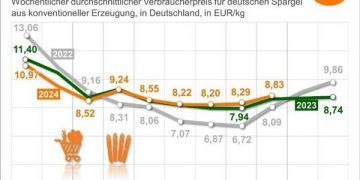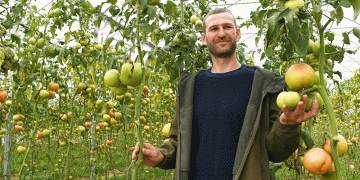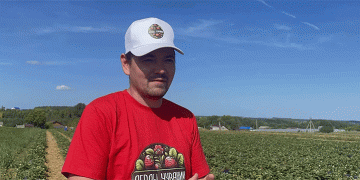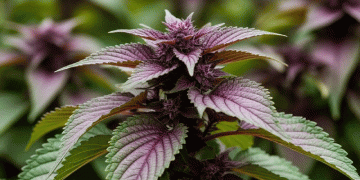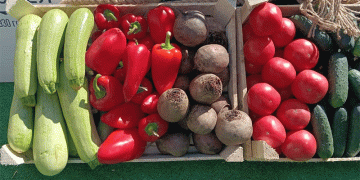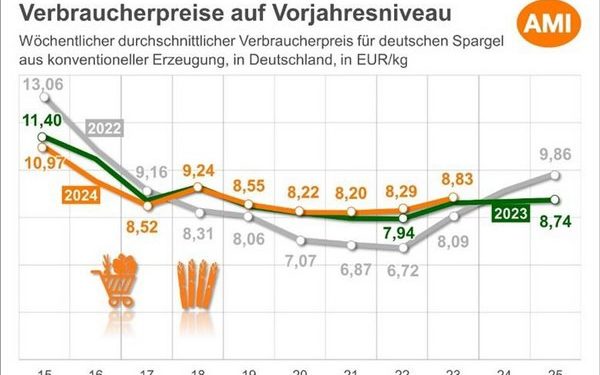Navigating Through Turbulent Conditions in European Asparagus Production
Asparagus growers across Europe faced a tumultuous start to the 2024 season, grappling with unseasonable weather patterns that tested their resilience and adaptability. According to reports, the season commenced early in mid-March, only to be marred by late frosts that disrupted harvest schedules and caused losses in green asparagus crops and early white asparagus plantings. The situation exacerbated in May, marked by unusually warm temperatures and heavy rainfall, leading to saturated soils and localized flooding in regions like Bavaria, abruptly halting harvest activities in some areas.
Despite these challenges, the majority of asparagus fields in non-flooded zones managed to weather the storm with minimal damage, ensuring a steady supply of the vegetable. However, the erratic weather conditions persisted into June, further complicating efforts with cooler temperatures stalling growth and resulting in reduced harvest yields and occasional shortages.
Simon Schumacher, spokesperson for the Verband Süddeutscher Spargel- und Erdbeeranbauer e.V., commented on the season’s difficulties, noting that while growers coped admirably with the adverse conditions, overall harvest volumes were anticipated to be lower compared to previous years due to weather-related setbacks. Remarkably, consumer prices for asparagus remained relatively stable, largely unaffected by inflationary pressures, offering a semblance of consistency amid the operational challenges faced by producers.
Dr. Ludger Aldenhoff, an asparagus cultivation consultant, emphasized the resilience of the crop in surviving the inundated conditions of April and May, highlighting that despite localized hardships, harvesting continued unabated in many regions until late June. In North Rhine-Westphalia, for instance, the season was characterized by a bifurcated experience, with southern growers contending with impassable fields and submerged young plants, necessitating adaptive harvesting practices.
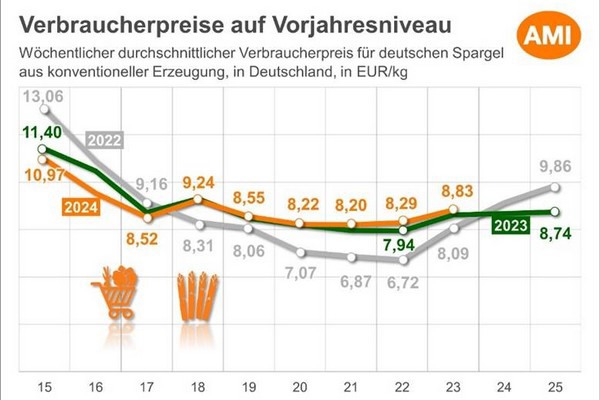
Market dynamics reflected a balancing act between supply and demand throughout the season. Initially subdued consumer interest following Easter gave way to heightened demand by late April, bolstered further during weekends and holidays in May. This surge in consumer appetite coincided with a period of declining harvest volumes, resulting in occasional mismatches between supply and demand in June.
Claudio Gläßer, an expert from Agrarmarkt Informations-Gesellschaft, underscored the stability in consumer prices observed from late April to May, with average rates for German white asparagus hovering closely around 2023 levels. Looking ahead, Gläßer anticipated a potential uptick in prices for June, albeit unlikely to reach the sharp peaks witnessed in 2022 under similar circumstances.
In conclusion, the 2024 asparagus season has been a test of fortitude for growers and stakeholders alike, navigating through unpredictable weather patterns while striving to meet consumer demand. As the season draws to a close, the industry reflects on lessons learned and prepares for future seasons with resilience and adaptability at the forefront.
